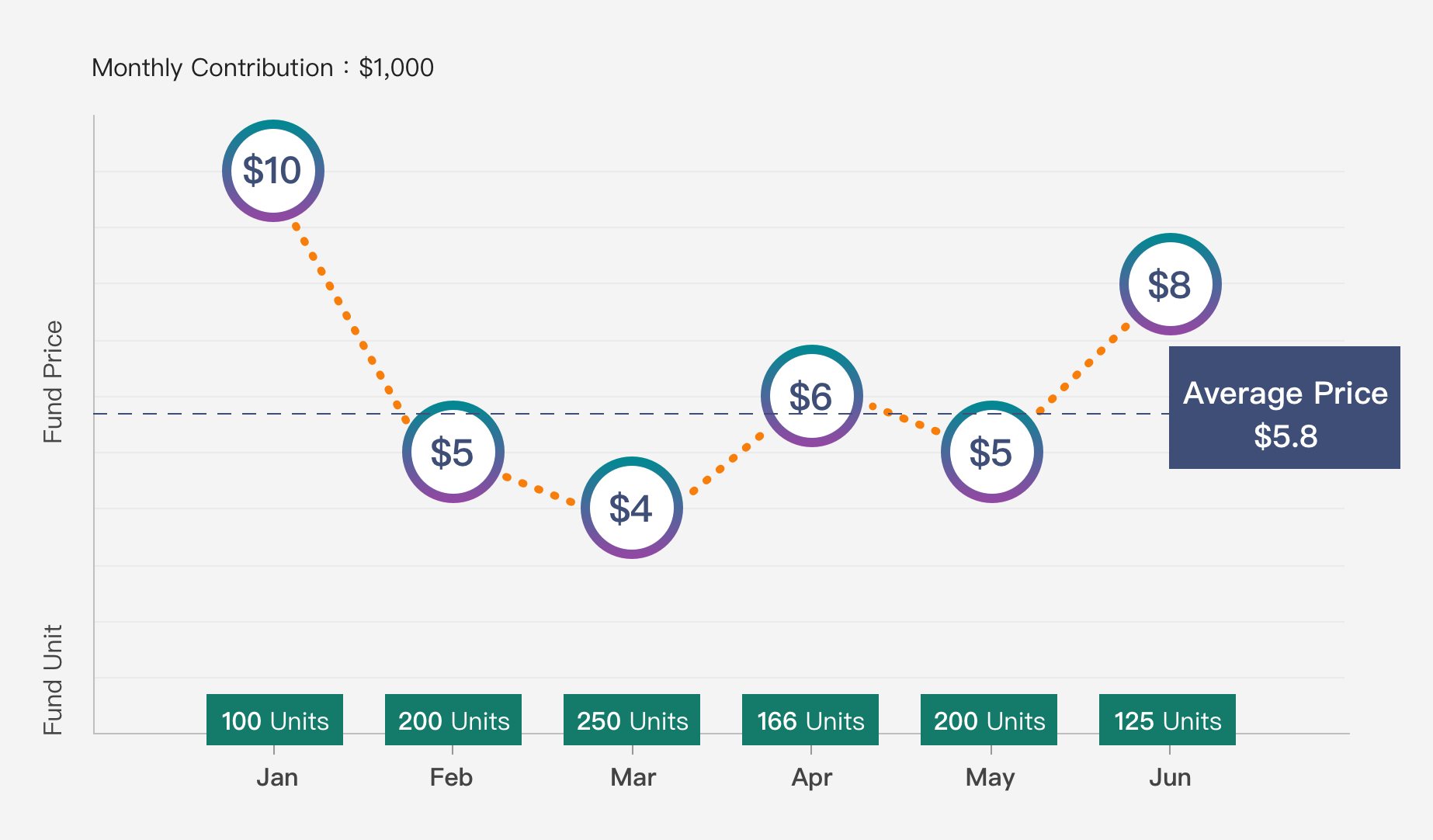- MPFA
-
MPF System
- Background
- Types of MPF Schemes
- MPF Coverage
- Enrolment and Termination
- Mandatory Contributions
- Voluntary Contributions / Tax Deductible Voluntary Contributions
- MPF Tax Matters
- MPF Account Management
- Withdrawal of MPF
- Arrangements for Offsetting Long Service Payment and Severance Payment
- Anniversaries of MPF System
- MPF Investment
- ORSO
- Supervision
- Enforcement
- eMPF Platform

MPF Investment
Principles of Fund Investment
- Your Position
- Homepage
- MPF Investment
- Principles of Fund Investment
Share
-
Facebook
-
LinkedIn
-
WhatsApp
-
Email
-
Copy Address
URL copied! -
Print This Page
Dollar cost averaging with MPF
Benefits of dollar cost averaging
When the unit price is high, the same amount buys fewer units.
When the unit price is low, the same amount buys more units.
After a period of time, the costs of fund units will be averaged out. In the long run, this helps to reduce the effects of short-term market fluctuations on investment.
The example below shows how dollar cost averaging works when fund price fluctuates.
Assuming in January, the fund price of a fund is $10, on the high side. With monthly contributions of $1,000, only 100 fund units are purchased. Then, the fund price fluctuates and it drops to $4 in March. With the same amount of monthly contributions of $1,000, 250 units are purchased. After six months, with fund units bought at various prices, the unit price of the fund averages at $5.8.


